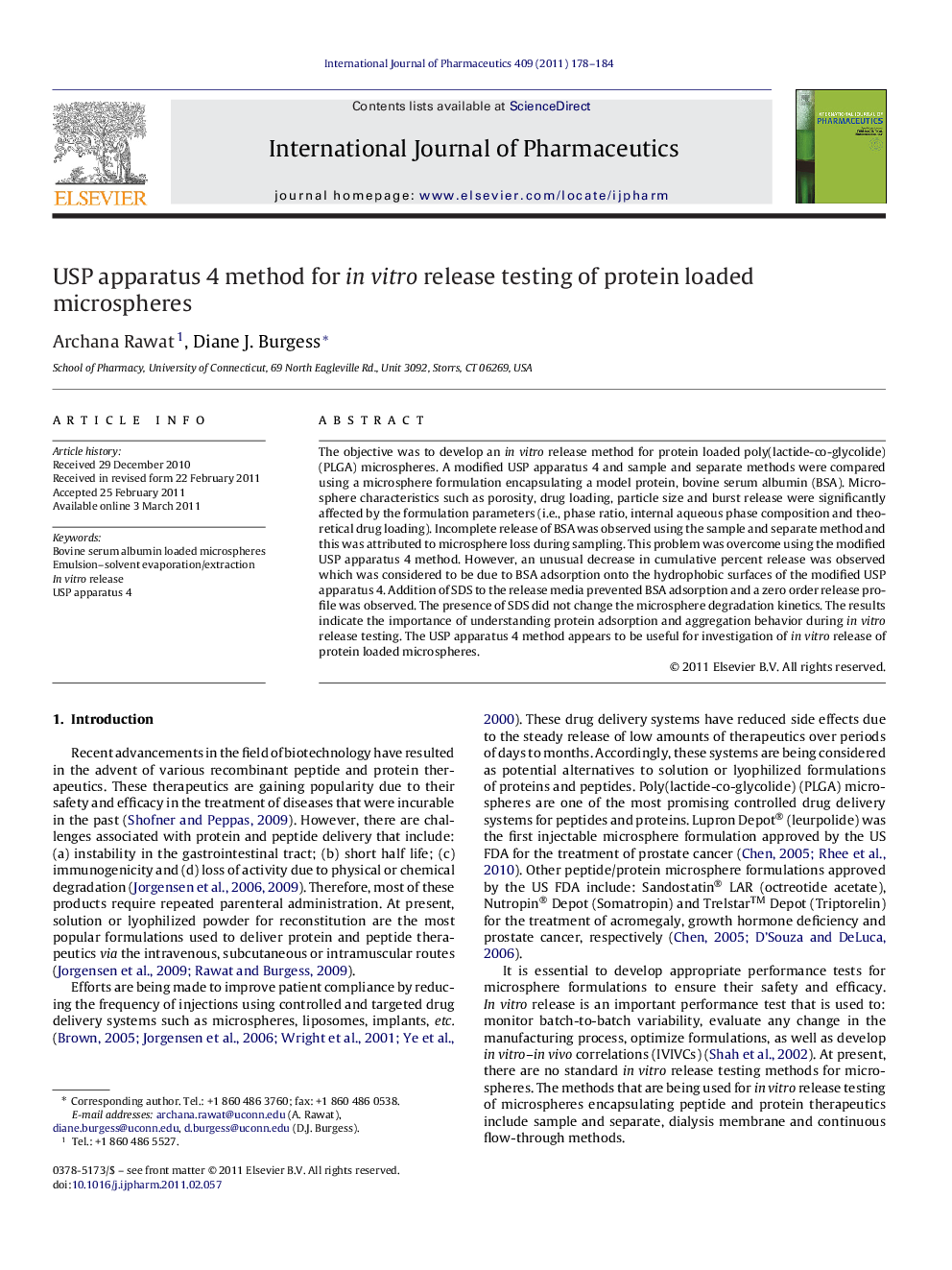| Article ID | Journal | Published Year | Pages | File Type |
|---|---|---|---|---|
| 2503608 | International Journal of Pharmaceutics | 2011 | 7 Pages |
The objective was to develop an in vitro release method for protein loaded poly(lactide-co-glycolide) (PLGA) microspheres. A modified USP apparatus 4 and sample and separate methods were compared using a microsphere formulation encapsulating a model protein, bovine serum albumin (BSA). Microsphere characteristics such as porosity, drug loading, particle size and burst release were significantly affected by the formulation parameters (i.e., phase ratio, internal aqueous phase composition and theoretical drug loading). Incomplete release of BSA was observed using the sample and separate method and this was attributed to microsphere loss during sampling. This problem was overcome using the modified USP apparatus 4 method. However, an unusual decrease in cumulative percent release was observed which was considered to be due to BSA adsorption onto the hydrophobic surfaces of the modified USP apparatus 4. Addition of SDS to the release media prevented BSA adsorption and a zero order release profile was observed. The presence of SDS did not change the microsphere degradation kinetics. The results indicate the importance of understanding protein adsorption and aggregation behavior during in vitro release testing. The USP apparatus 4 method appears to be useful for investigation of in vitro release of protein loaded microspheres.
Graphical abstractFigure optionsDownload full-size imageDownload as PowerPoint slide
